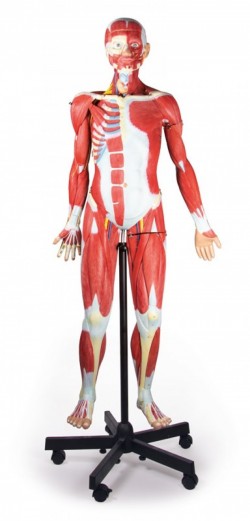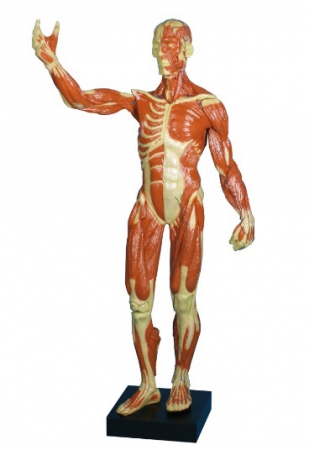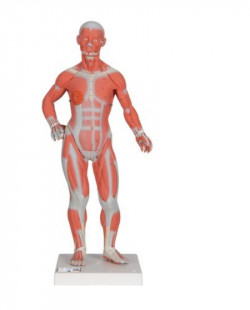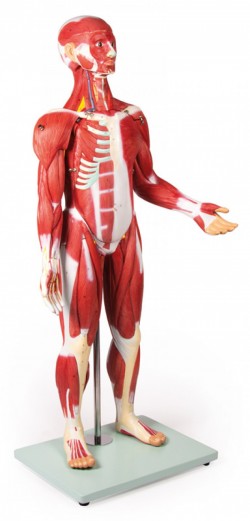Home / Anatomical Models / Muscle models / Model of the muscle figure
 Download a PDF file
Download a PDF file
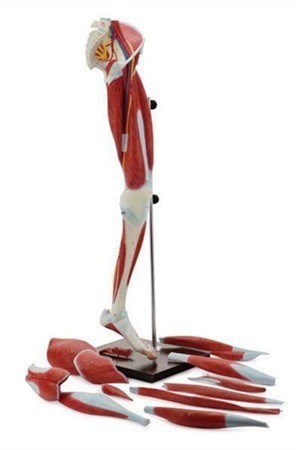
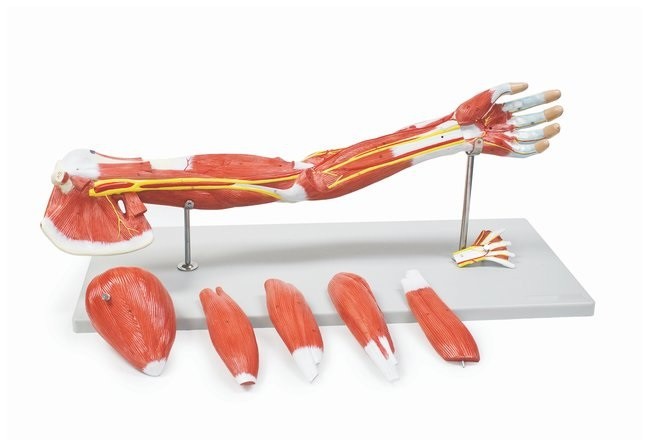
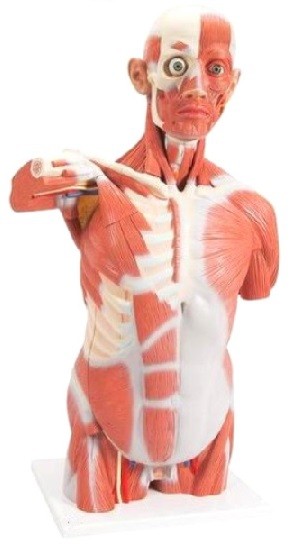
Anatomical Models - Muscle models
Muscle anatomical models are an ideal solution used to learn anatomy, mainly by medical students, healthcare professionals, and anatomy enthusiasts. Our models are the perfect tool to explore the mysteries of muscle structure and function. Muscle anatomical models are the result of a combination of precise craftsmanship, the latest technology and careful study of the human body. Each model is a faithful replica, reflecting both the appearance and positioning of the muscles, enabling a deeper understanding of how the work of muscles affects movement, posture and overall health. Our offer includes models of muscles of the lower and upper limbs, muscle models of the torso and models of muscular figures. Each anatomical and didactic model is an exact reflection of anatomical structures, created with great precision and care.
Muscle building:
- Muscle fibers are the basic functional unit of muscles.
- Myofibrils - are structures that build muscle fibers made of actin and myosin filaments.
- Actin and myosin are proteins that play a key role in muscle contraction. They move between each other during contraction, shortening the muscle fiber.
- The sarcomere is the contraction unit of the muscle. It contains a set of actin and myosin filaments. Muscle contraction occurs by shortening of the sarcomere as actin filaments slide between myosin filaments.
- Neurotransmitters - muscles are controlled by the nervous system. Nerve cells called motor neurons send electrical signals to the muscles, triggering them to contract.
Muscle function:
- Movement - muscles allow you to move, perform gestures, maintain balance.
- Maintaining posture - muscles maintain body posture providing stability in various positions (both in motion and at rest).
- Temperature regulation - heat is generated during muscle contraction. This process helps with temperature regulation. When the temperature drops, the muscles begin to contract involuntarily, producing heat.
- Protection of internal organs - e.g. Abdominal muscles are a protective layer for the internal organs beneath them.
- Blood circulation - The muscles of the heart are responsible for pumping blood through the circulatory system.
- Breathing - incl. the intercostal muscles and the diaphragm are crucial during the breathing process. They support breathing movements.
- Work inside the viscera - smooth muscles that are in the internal organs perform work by pumping, moving or mixing the contents of these organs.
- Expression of emotions - facial muscles are responsible for expressing emotions by changing facial expressions.
- Metabolism – Muscles use energy during contraction, which can affect your metabolic rate and help you maintain a healthy body weight.
What does the OpenMedis online store offer?
- Models of muscular figures - these models show the human figure with the deep and superficial muscle layers. In our offer you will find various types of models in this category, e.g. a model of a life-size male figure, both-sex models, 1/3 and 2/3 life-size models.
- Models of lower limb muscles - in our offer we have models of lower limbs of natural size with removable elements. Models in their construction also show such elements as: blood vessels, nerves and ligaments.
- Upper limb muscle models - in our online store we have disassembled models of the upper limb. These models are life size.
- Models of the muscular torso - in our offer we have a model of the muscular torso with organs, a bisexual model of the torso with muscles and a model of the muscles of the back.
Application of muscle anatomical models:
- Medical education - didactic models of muscles are irreplaceable in teaching anatomy at medical universities (students of medicine, dentistry, physiotherapy and others). They support the process of remembering the structure of muscle structures and their topography.
- Training of healthcare professionals - muscle models are often used during training programs and during conferences.
- Scientific research - muscle anatomical models support research on biomechanics, muscle physiology and their pathologies.
- Therapy - anatomical models help to explain their current state to patients health status and planned therapy.
- Public education - educational models can be used in exhibitions, museums, health workshops and for educational purposes. They help raise awareness about the human body and a healthy lifestyle.





 See our profile on Facebook
See our profile on Facebook
 Check our profile on Instagram
Check our profile on Instagram
